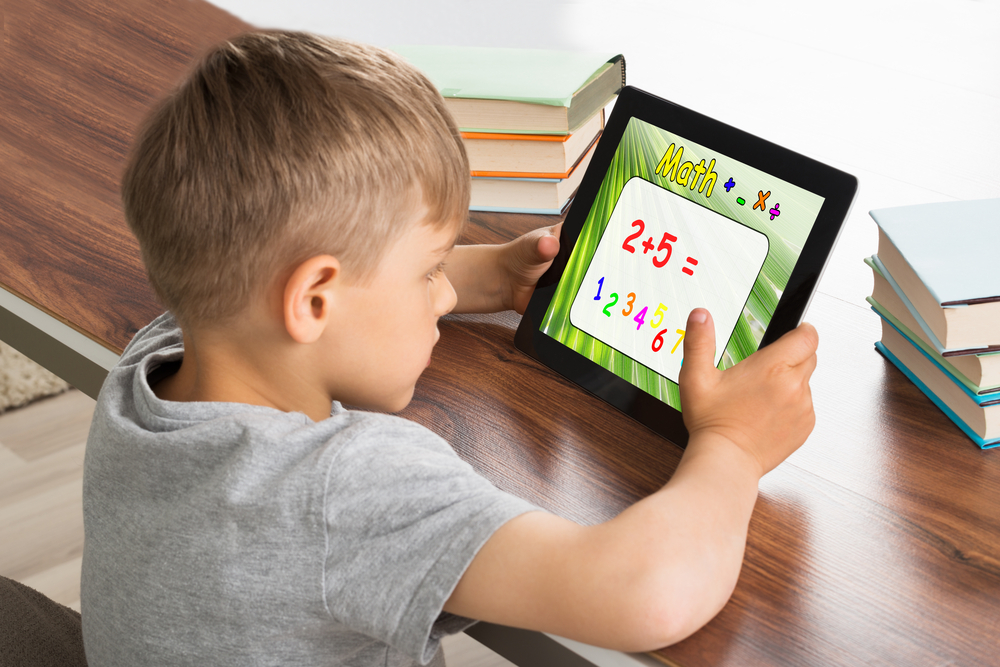Division practice Science Worksheets for Ages 8-9
5 filtered results
-
From - To
Our Division Practice Science Worksheets for ages 8-9 combine the excitement of scientific exploration with essential division skills. Tailored for young learners, these engaging and interactive worksheets help third and fourth graders master division while simultaneously building their understanding of core science concepts. Each worksheet includes fun activities and real-world problems designed to motivate and challenge students, making learning an enjoyable experience. Ideal for classroom or homeschool settings, our resources not only enhance mathematical proficiency but also promote curiosity and a love for science. Equip your child with the skills they need for academic success with Kids Academy’s targeted and comprehensive worksheets.
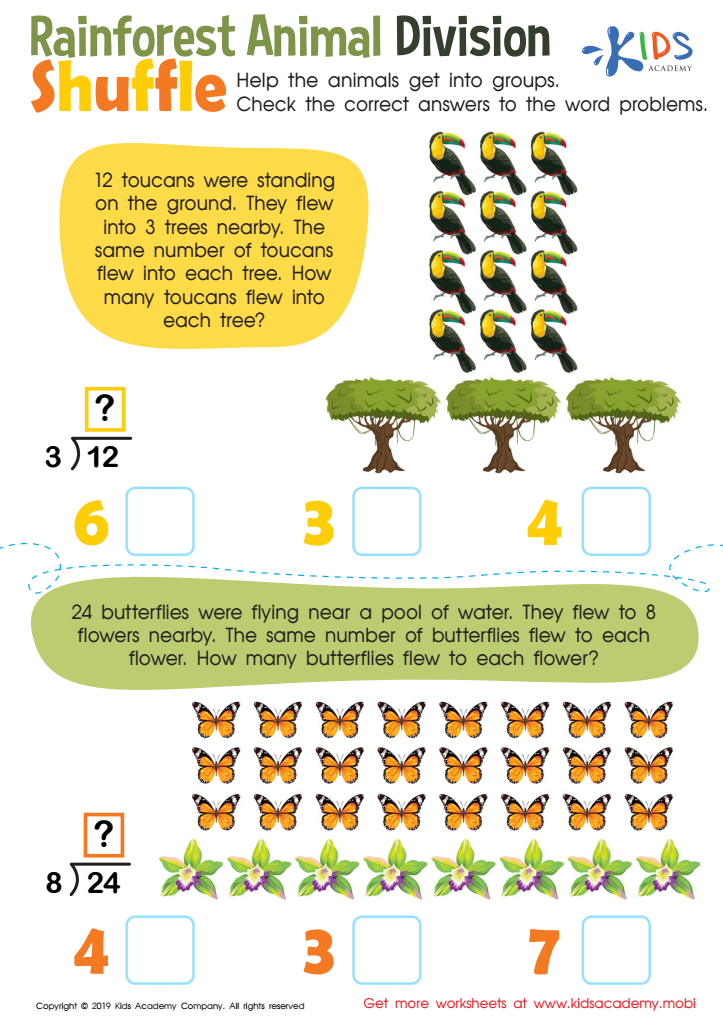

Rainforest Animal Division Worksheet
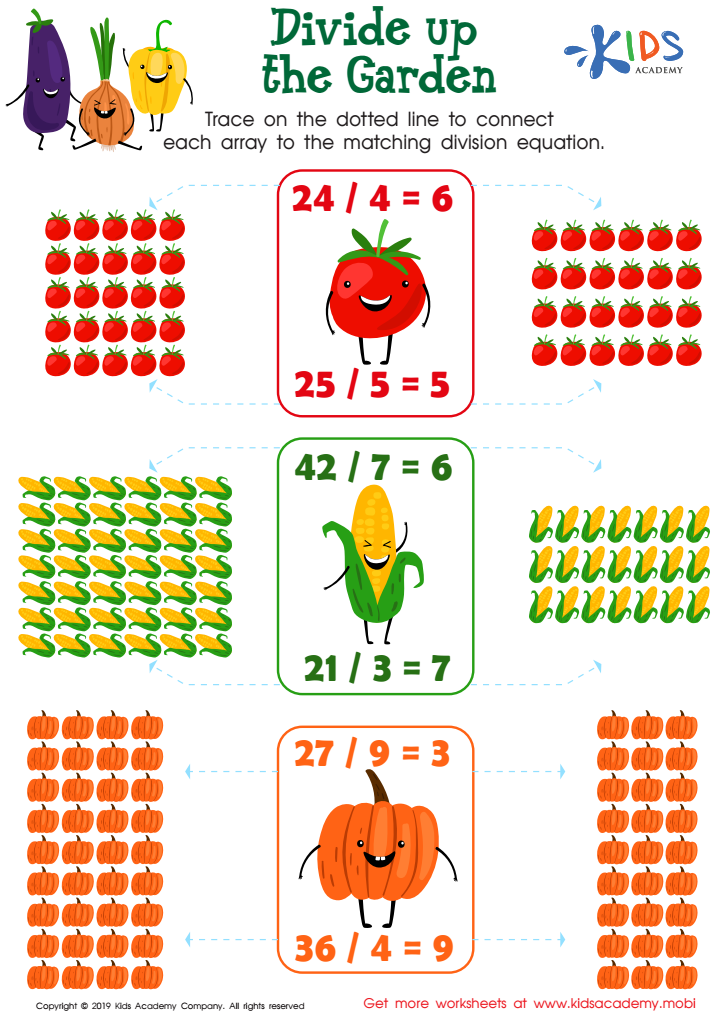

Divide up the Garden Worksheet


Water Division Word Problems Worksheet
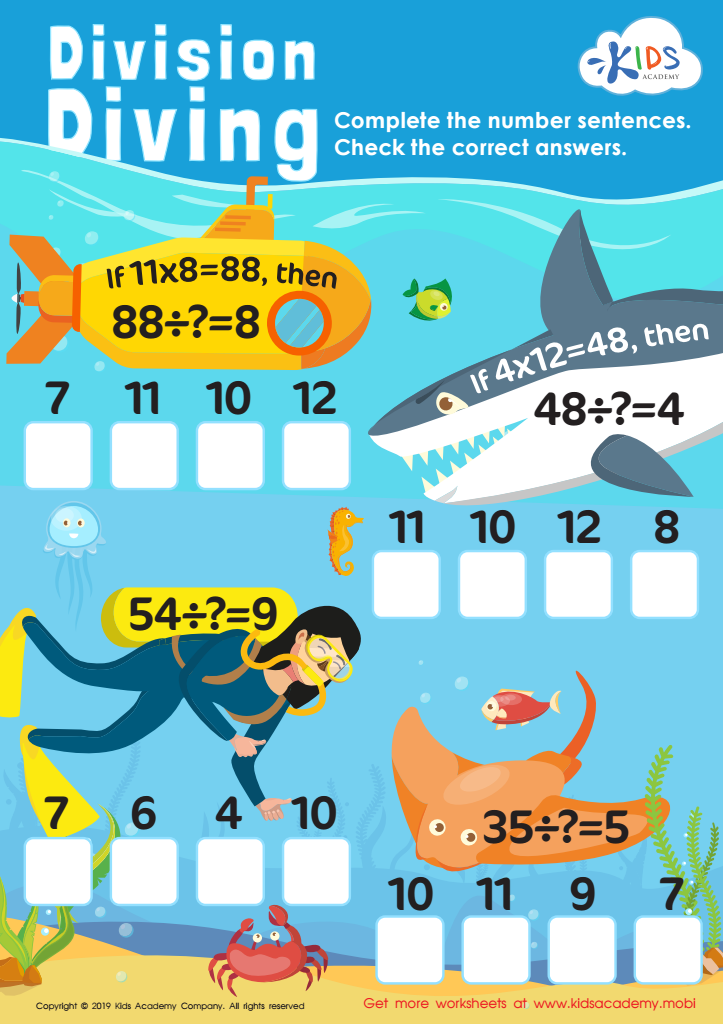

Division Diving Worksheet
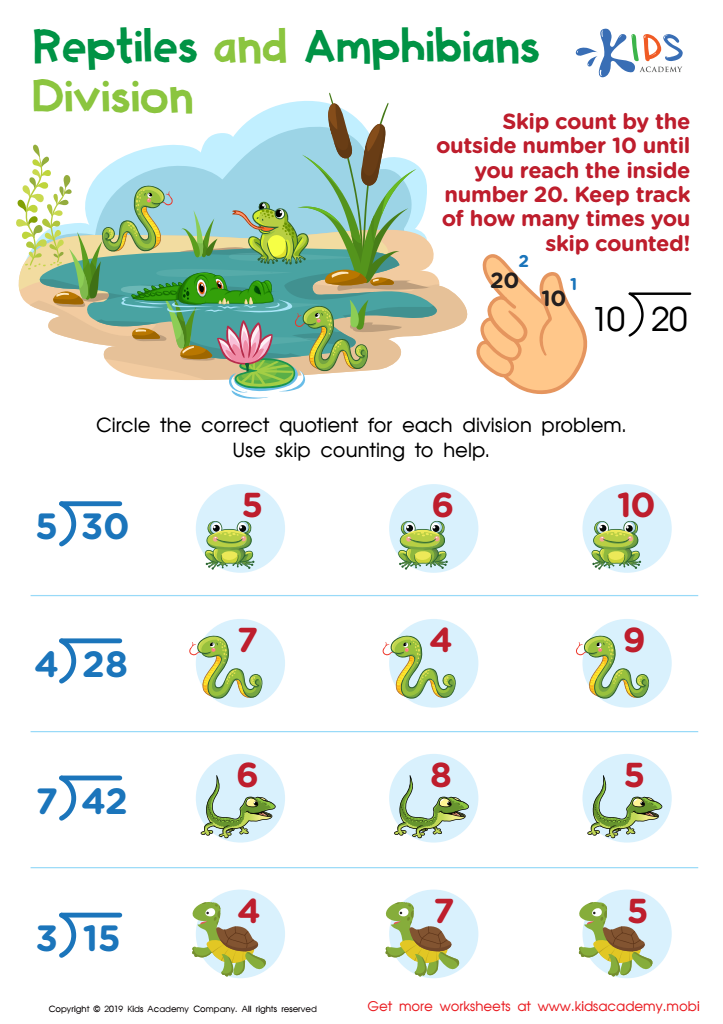

Reptile and Amphibians Division Worksheet
Fostering a love for division and science in children aged 8-9 is crucial for several reasons, as it significantly aids their cognitive and academic development. First, division practice reinforces critical thinking and problem-solving skills. These abilities are foundational for understanding more complex mathematical concepts, ultimately boosting overall math proficiency.
Science enhances inquiry-based learning, nurturing curiosity and encouraging children to ask questions, experiment, and explore the world around them. By combining division with science, students can visualize abstract mathematical concepts in real-world contexts, making learning more tangible and meaningful.
Moreover, incorporating division practice within science can improve children's confidence in STEM (Science, Technology, Engineering, and Mathematics) subjects. This early exposure is essential because it builds a robust learning foundation, promoting continuous interest and potentially guiding them toward future careers in these fields.
Teachers and parents play a critical role by creating engaging, hands-on activities that blend division and science. For instance, dividing objects during a science experiment or using scientific data to practice division can make learning fun and relevant. In summary, prioritizing division practice within science education for children ages 8-9 helps develop essential life skills, boosts confidence in STEM subjects, and lays the groundwork for future academic and career success.

 Assign to My Students
Assign to My Students





